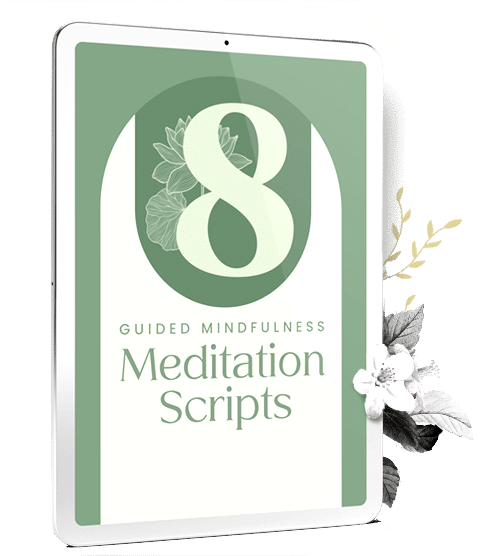Self-compassion is a bit of a buzzword these days, but there is often confusion around what it is, how to practice it, and why it’s so valuable. Is it a verb? Is it a noun? Is it the same as self-esteem? Does it equal self-pity? What if it feels out of reach? Am I doing it right?
All of these questions are understandable given that there are multiple definitions of compassion itself. To deepen your understanding of self-compassion and why it’s so important, we will explore:

What is Self-Compassion?
To better understand self-compassion, its application, and its power, we first need to understand what compassion is. Amongst the many definitions of and approaches to compassion, one of its prerequisites is suffering. In other words, compassion is love in the midst of suffering. With this definition at heart, self-compassion is love in the midst of our own suffering. That suffering could be physical or emotional, such as stress, anxiety, depression, craving, addiction, trauma, grief, or fear. Self-compassion is an experience or state, but it can also be made a practice.
So, with self-compassion, there is some level of internal suffering that we bring our care to. We offer it gentle awareness and tenderness. Sometimes, it serves us to hold our suffering lightly – to very gently acknowledge it and wish ourselves well. Other times, when we have the space and capacity for it, we can bear witness to our suffering very deeply. We can focus intently on it. We can examine it, zero in on the physical sensations, mental associations, beliefs, and history. Neither approach is better nor worse than the other. There is a place for both.
Misconceptions About Self-Compassion
There are many misconceptions about self-compassion, such as that:
Self-compassion, however, is not about feeling sorry for ourselves – and it is equally not about feeling confident or sure of ourselves. Rather, self-compassion is about being a loving, non-judgmental witness to whatever challenges we face, be those internal or external challenges.
Furthermore, going to the gym or eating kale may be acts of self-care (or self-compassion in action). But what we really want to get at with self-compassion is the internal way we relate to ourselves, not what we do externally. Why is this distinction important? Because going to the gym or eating certain foods could be done from a place of self-love or out of fear (i.e. “I’m not going to be good enough or attractive enough if I don’t.”) In other words, the action tells us little about the motivation.
When we consider self-compassion as an internal way of relating to ourselves, it is easier to see that a deep feeling of care from the heart is essential. That core of self-compassion will then dictate the actions we take externally, but it is within that self-compassion lies.

Is Self-Compassion All or Nothing?
Another assumption that some people subconsciously hold is that self-compassion is something we are either succeeding at or failing at. We might expect that we should be fully self-accepting and fully self-loving 100 percent of the time. However, self-compassion (as with most things) exists on a grey scale. It is something we practice and dance with.
If we are practicing self-compassion and struggling to feel acceptance and care, it does not mean we aren’t ‘doing it right.’ We can ease this ‘all or nothing’ pressure by harnessing patience and curiosity:
If I could care for myself just a little bit more, what might that feel like?
If I could befriend this experience just a little bit more, what might that look like?
Can I take this in baby steps, letting it be a moment-to-moment type of cultivation?
The reality is that most of us still hold some degree of dislike, discontent, or unworthiness towards the self. We might feel like we need to be doing a little bit more to be ‘good enough’ or we might subconsciously impose conditions on befriending ourselves. Perhaps we have thoughts that sound like, “I shouldn’t feel this way…” or “I’ll accept myself when…”
These thoughts and beliefs are a perfect opportunity to practice mindfulness and self-compassion. Can we hold the thoughts themselves with gentle awareness? Can we simply note their presence with tenderness? Can we offer our doubts, insecurities, and conditions with a little bit of warmth? Where this is difficult, we might consider how we would feel if we heard that a loved one were struggling in the same way. Chances are we would hold them with patience, care, and warmth. Can we offer ourselves even just a little bit of that?
Where Does Conditional Self-Compassion Come From?
A lot of the thoughts and beliefs we hold that inhibit unconditional self-compassion stems from childhood. Even the best of parents may have at some point placed conditionality upon full love – or at the very least, we may have perceived it that way. In other words, the conditionality we give to self-compassion may have deep roots. However, with patience and continued practice, we can tend to those roots and give them the unconditional compassion they yearn for.
PRACTICE:
One way to work with the thoughts and beliefs formed during childhood is to journal our reaction to the conditional love once granted to us. Once we have written out our feelings, we can get curious: What were the roots of that parent or caregivers behavior? What was it like for them to parent in that way? This is not about condoning any harm caused to us, but the curiosity may support us with understanding and forgiveness – to whatever degree we are capable of it. Please see the note in the next section before practicing this.

The Courage Required for Self-Compassion
It is easier to talk about self-compassion than to practice it. Who really wants to open to their suffering? Why would we want to sit with the very feelings we have been trying to avoid or get rid of our entire lives? It can certainly take great courage to open honestly to our suffering – without trying to suppress, exaggerate, or avoid it.
This is why it is helpful to take the practice in baby steps – to work with mild forms of suffering before moving to deeper ones. This applies in particular to those who are new to self-compassion practice. Experienced practitioners may be prepared to explore some of the heavier, more intense forms of suffering. In any case, it requires courage to look at the suffering within us.
NOTE:
Self-compassion can transform our relationship to our past and present, but it is not a substitute for professional healthcare. Furthermore, bringing mindfulness to our past experiences can cause trauma to resurface. For those with significant past trauma or mental health challenges, seek support from a trained professional.
The Interplay Between Mindfulness and Self-Compassion
Mindfulness is required for self-compassion, but the two are not one in the same. We can be mindful of any experience whereas self-compassion has that prerequisite of suffering. With that said, mindfulness equates to self-compassion when we are bringing mindfulness to our own suffering. This is because mindfulness is non-judgmental awareness of our moment to moment experience. The non-judgment piece is crucial. We are not noting our suffering to be right or wrong, good or bad. It simply is, and with mindfulness, we can tend to it without reacting. We might ask ourselves:
Can I simply be with this?
Can I listen to what’s here, even just a little bit?
Can I feel into this, to whatever degree is right for me in this moment?
Mindfulness helps us to acknowledge what is present without reacting. It can also open us up to greater allowance or acceptance. Acceptance is not about liking or condoning what is here; it is about letting whatever’s here be here, simply because it is. As with self-compassion, acceptance and allowance do not need to be all or nothing. What might it feel like to open to our experience with just a little bit more acceptance or allowance than we’d previously given it?
We might also try befriending our suffering. Perhaps seeing it not a best friend but an acquaintance. We might not wish for this friend to be around, but here they are. Can we try to just rest in their presence, get to know them a little bit, and ultimately wish them nothing but ease and wellbeing?
TIP:
When practicing self-compassion, experiment with the words: acknowledge, allow, accept, and befriend. What helps you to lean in with greater tenderness, care, and curiosity? Remember that none of this needs to be all or nothing.
If you’ve ever wondered how mindfulness and self-compassion support each other—or when to lean into one more than the other—this episode offers rich guidance. Clinical psychologist and MSC co-developer Chris Germer joins Sean Fargo to explore how both practices help us meet suffering with greater presence and care.

When Self-Love Feels Too Difficult
When self-compassion feels out of reach, it is helpful to remember: it doesn’t have to start with us. In other words, we can reflect upon a person or animal who cares for and loves us. Maybe that’s a pet, a friend or family member, a mentor, a spiritual figure, God, or the Dalai Lama. It could be someone who is alive or someone who has passed on. The important thing is that it is a being that you know only wishes you well.
As you reflect on this animal or person, imagine looking into their eyes and seeing them look at you with care. Can you be present with that? Can you open to that sense of care? Let it in bit by bit to allow yourself to feel what it is like being cared for.
This practice could even be extended to feeling love and care from the natural environment. For instance, can you feel the love of a tree sheltering you? A body of water nourishing you? The air around you breathing life through you?
But again, the idea here is that we are first sensing into love coming in from outside of us. Can we be open to receiving that love? Feel into it and dance with it a little bit. Allow it to enter you in the midst of what may be uncomfortable. Can you allow yourself to be cared for? If that feels difficult, that’s okay. Take it step by step – and always with curiosity.

Opening to Our Suffering
Mindfulness of our suffering can be seen as a radical act. In modern society, many people instead choose to numb themselves, such as via distraction or addiction. One antidote to that is to simply slow down. As we slow down, we create space for our full humanity – including our difficulties – to be known and felt.
That is why so often on meditation retreats, usually by the end of the second day or the start of the third day, boxes of tissues make their way around the meditation hall. By this point, people have given themselves permission to slow down and to allow their feelings to surface. When we open to our suffering in these types of settings, an immense amount of compassion fills the room.
It’s important to note that while this allowance of emotions is indeed a beautiful experience, self-compassion practice can be quite challenging. Both pleasant and unpleasant feelings can come to the surface. Typically, we dance between a whole range of feelings, thoughts, and sensations. Feeling into this full range of human experience is precisely why mindfulness is not about feeling calm, content, or happy. It is about feeling what we actually feel and sensing into our whole human experience from moment to moment.
An Invitation to Feel What You Feel
We do not need to drum up our suffering, nor do we need to suppress it. But when suffering does present itself, can we let ourselves feel it? Can we tend to it with care, patience, and curiosity? Can we allow these more tender aspects of our human experience to exist?
In the same vein, when we experience joy, ease, gratitude, or contentment, can we really be there for it? Can we allow it to exist in the same way that we allow our suffering?
The invitation is really to feel what you feel – whether you ‘like’ or ‘dislike’ the feeling. We often hear it said that it’s okay to feel what you feel, but it’s more than okay: it’s important. Being able to feel the full range of our human experience allows us to hold compassion for others as they experience their full range, too. And, as Francis Weller has said:
“The work of the mature person is to carry grief in one hand and gratitude in the other and to be stretched large by them. How much sorrow can I hold? That’s how much gratitude I can give. If I carry only grief, I’ll bend toward cynicism and despair. If I have only gratitude, I’ll become saccharine and won’t develop much compassion for other people’s suffering. Grief keeps the heart fluid and soft, which helps make compassion possible.”

The Power of Self-Compassion
We can circle back to that honest and valid question: Why would I want to sit with what I’ve been trying my whole life to get rid of? The answer is because self-compassion has the power to transform. It enables us to enhance the relationship we have with ourselves, making it a more patient, loving, and caring one.
Self-compassion can build happiness, resilience, and wellbeing. It can also help to reduce depression and anxiety. It is again worth noting that self-compassion is not a substitute for professional mental healthcare, but it can indeed be a supportive practice – a way of being we can learn.
As we deepen our capacity for self-compassion, we learn to wisely and lovingly hold more of our full human experience. As we do this for ourselves, we naturally learn how to do this for others. In effect, self-compassion ripples into and enhances our relationships. So, self-compassion is a gift not just to ourselves but to those we love, too.
So as you journey through this human life, see if you can make a little more room for your full human experience – suffering included. If you teach mindfulness to others, try to open your heart a little wider to hold whatever comes up for your students. Can we make more room in our personal (and perhaps professional) mindfulness practice to let our emotions be? As we do, we transform the world from the inside out.














